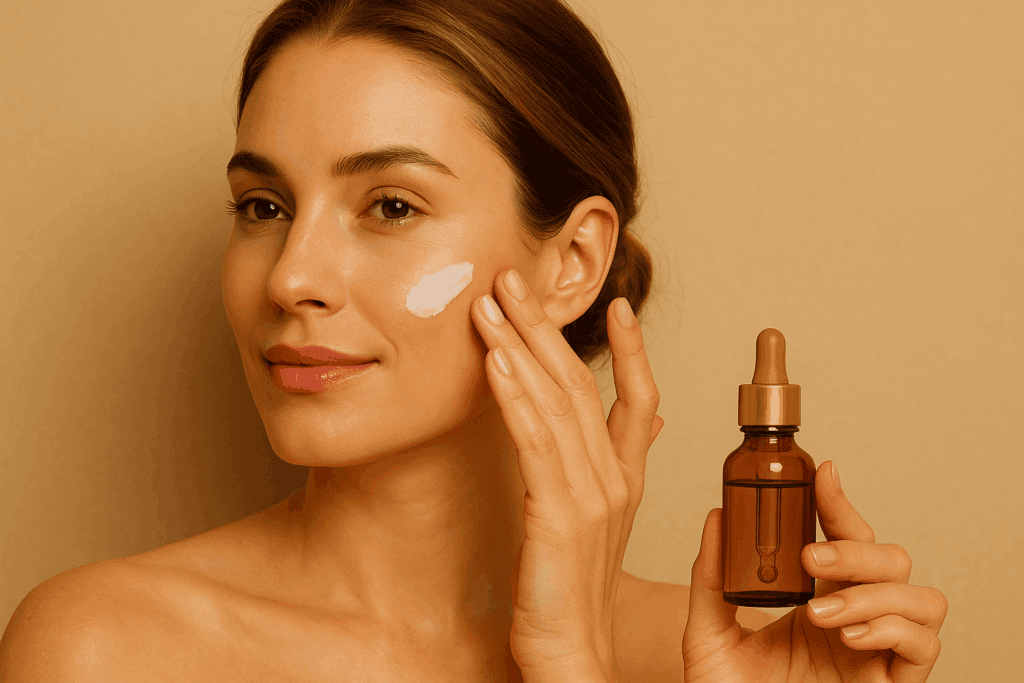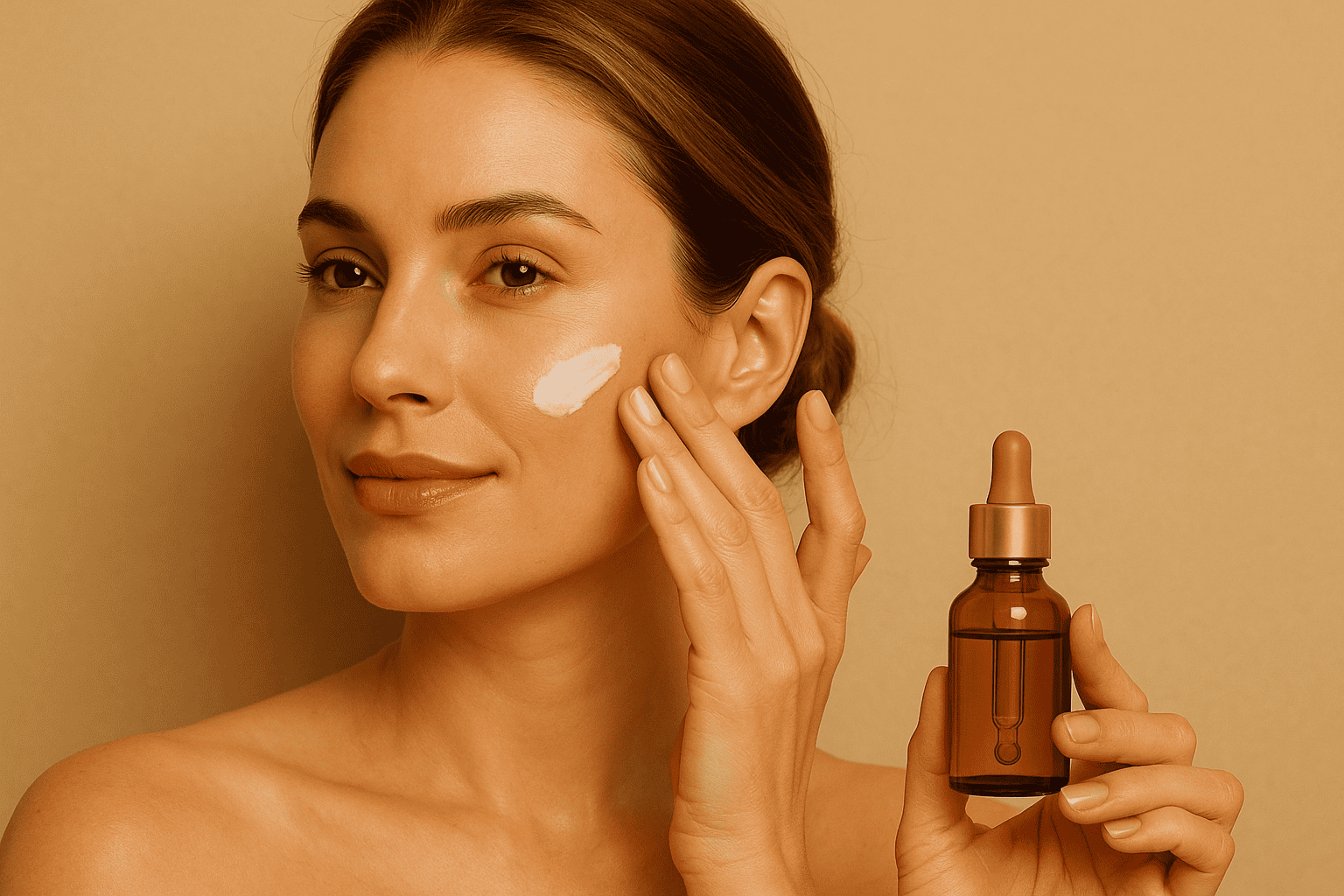Plus, hot baths and why eating bread feels better in Europe.

I haven’t gotten botox in two years.
I used to get it 1-2 times every year until I couldn’t ignore that nagging “this feels off” feeling.
Yes, it works. But Botox is a band-aid.
Botox paralyzes targeted muscles. Over time, others compensate and grow, which can shift the architecture of your face. And while I’m not worried about the toxin itself (it breaks down quickly and stays local), the technology already feels outdated.
So I stopped. And thanks to my inside/outside regenerative skin protocol? I haven’t missed it.
🤓What to know: Skin ages due to internal and external stressors we can influence.
We tend to think of aging skin as surface-level. It’s not. Hormonal changes, free radical damage, chronic inflammation, and nutrient deficiencies all contribute to aging.
The good news? You have a lot of control.
🌀 Preserving fibroblasts preserves collagen
- Fibroblasts (the cells which make collagen, elastin and hyaluronic acid) get damaged by free radicals from UV light, loss of estrogen, and Vitamin A deficiency.
- Preserving these cells’ function is the number one thing you can do to slow aging.
☀️ Protecting against UV slows skin damage
- UVA/UVB rays generate free radicals that destroy skin cells.
- Langerhans cells (your skin’s immune defense) drop with sun exposure.
- Protecting your skin from the sun prevents skin damage now and protects your skin’s ability to fight future damage later.
🏭 Strengthening the skin barrier blocks pollution damage
- Pollution generates free radicals and activates enzymes called matrix metalloproteinases (MMPs) that degrade collagen and elastin.
- Pollutants penetrate pores and hair follicles, triggering low-grade inflammation that can exacerbate existing skin conditions like acne, rosacea, and eczema.
- A healthy skin barrier prevents fine particulate matter, heavy metals, and toxins from penetrating and triggering inflammation and oxidative stress.
🍭 Preventing blood sugar spikes prevents sagging & wrinkles
- High-glycemic diets trigger glycation, where sugar stiffens collagen and elastin. Hello, wrinkles.
- Pairing carbs with protein and fiber prevents spikes and stiffening.
⚖️ Slowing estrogen loss slows aging
- Women lose up to 30% of dermal collagen in the 5 years after menopause (Climacteric, 2022).
- Langerhans cells become less active, increasing risk of dermatitis, photoaging, and skin cancer.
- Topical or systemic estrogen therapy can slow the loss and protect skin immune function.
🦠 Gut health = skin health
- Yeast overgrowth and dysbiosis drive systemic inflammation and trigger skin conditions like acne, eczema, and premature aging.
- Good bugs produce short-chain fatty acids like butyrate, which support skin barrier repair and hydration from the inside out.
💪 What to Do: Target inflammation and hormonal shifts and treat topical damage
The most effective skincare is systemic. Here’s my go-to protocol:
🥦 Feed skin with antioxidants, CoQ10, and glutathione
- Eat a rainbow of fruits and veg (especially kale, bell peppers, sweet potatoes, kiwi, broccoli, avocado, and spinach).
- Supplement with CoQ10 (supports cellular repair) and NAC (boosts glutathione—the body’s “master antioxidant”).
🚫 Eliminate inflammatory foods like wheat, dairy, and sugar
Wheat, dairy, eggs, sugar are the most common breakout triggers for acne, eczema, and psoriasis (Nutrients, 2023).
- Cut sugar to < 25g per day.
- Try a 30-day elimination diet to test your tolerance for gluten, dairy, and eggs.
🧫 Test & treat microbiome balance
- Aim for 30+ different plants per week (fruits, veggies, legumes, herbs) for microbiome balance.
- Take the GI Effects stool test or the TioSmart SIBO test (both of which we offer at Parsley Health) help personalize treatment protocols.
💧 Drink 80 oz of water per day
Dehydrated skin is more prone to oxidative stress and more vulnerable to oxidants and pollutants.
- Drink half your body weight in ounces.
🧴 Topicals and treatments that actually work
✅ Vitamin A
I prefer a gentle form of vitamin A to more irritating higher-potency formulations. Look for:
- Retinyl palmitate or retinyl propionate, which are converted to retinoic acid naturally by your skin cells. My go to: Environ.
- Avoid topical retinol and retinoic acid (more potent but more irritating).
✅ Vitamin C + E
Vitamin C is one of the most well-studied topicals for producing collagen while protecting from UV and pollution. Look for:
- 10-20% L-ascorbic acid
- Formulas with stabilizing ingredients like vitamin E and ferulic acid
✅ Peptides
Peptides stimulate collagen, elastin, glycosaminoglycan and hyaluronic acid synthesis, which reduce inflammation and improve hydration, elasticity, and firmness. Look for:
- Palmitoyl tripeptides
- Palmitoyl pentapeptide‑4 (Matrixyl™)
- Copper peptide GHK‑Cu
✅ Microneedling
I use a 0.2mm roller at home, plus in-office sessions 1–2x a year.
- Microneedling improves product absorption from a base case of 10% to up to 70% and boosts collagen.
- Plus, controlled micro-injuries trigger the body’s wound-healing response, boosting type I and III collagen and elastin.
✅ Mineral sunscreen
Protect your skin without disrupting hormones.
- I like Good Weather Skin, Babbo Organics, and Beauty Counter for mineral-based, non-toxic sunscreen.
- If you’re worried about Vitamin D levels, supplement with Vitamin D3, the activated form.
✅ Topical estrogen
I recommend a 0.01% compounded estradiol or estriol cream used daily for 12 weeks then 3 days per week for maintenance. (At this low level systemic absorption is low and does not replace your HRT.)
Coming soon: My take on radiofrequency, lasers, and energy-based tech!
RMBD WELCOME
⚡ Quick Hits
Weighted vests for perimenopause: Weighted vests help maintain metabolism during weight loss, per a new study.
🏋️ Up your gravitational loading during perimenopause to fight weight gain and build bone density.
Why bread feels better in Europe: European bread often uses simpler ingredients (less flour processing), longer fermentation, and fewer preservatives, which may reduce inflammation and gut issues.
🥖 Look for sourdough or artisan breads with minimal ingredients and long fermentation. Or try baking with imported flours to mimic the Euro effect!
Hot baths > saunas: Hot water immersion raises core body temp twice as much as saunas, raises heart rate by 39 bpm, and boosts immune function (+ interleukin-6 levels).
🛁 Aim for a 45 min soak at 105°F.
💛The Momgevity Files
Anyone else feel both less healthy and healthier on vacation? I call it the Vacation Paradox.
I’m eating way more gluten from the local farm store bakery, drinking more wine than usual, and skipping my regular weight training and reformer Pilates.
But… I’m also meditating daily.
Spending hours in the ocean, soaking up mood-boosting negative ions.
Running after my kids on the beach.
Walking obsessively—Japanese-style—with friends I’ve already converted. (If you missed last week’s newsletter, go read it!)
I haven’t opened Zoom in days. And I’m sleeping eight, sometimes nine hours a night.
That’s the paradox. We always hear: “I went to Europe, ate pasta and drank wine every day and felt amazing.”
It’s not just about the food. It’s the whole environment: higher food quality, fewer additives, more sunshine, more movement, less stress. Nature, joy, and a healthy cortisol rhythm go a long way.
Would I drink this much or skip strength training if I lived here year-round? Definitely not. I’d join a gym.
But I don’t live here year-round. So today, as soon as I finish writing this, I’m off to pick up my favorite zit-inducing aged blue cheese, a kombucha that has way too much sugar, and a loaf of fresh Einkorn bread.
Will I do 40 jump squats before I get in the car to blunt the glucose spike? Yep. But I’m also not feeling guilty.
This whole experience feels deeply health-restorative. Longevity-boosting, even. I swear I can feel my telomeres lengthening.
Longevity isn’t about perfection. It’s about the full toolkit. For every healthspan-shortening indulgence, there’s a way to counterbalance. And often, to enhance.
These slow, sunny, gluten-filled days with my family are the core stuff of life. The moments I’ll hold onto when I’m 99, thanks to everything I do the rest of the year. Knowing I made these memories joyfully is the most health-giving part of all.
Stay strong, stay curious, and remember to breathe,
Robin
